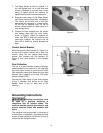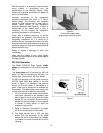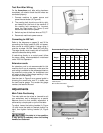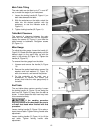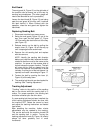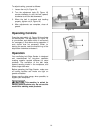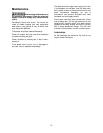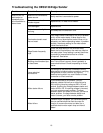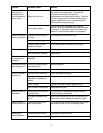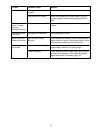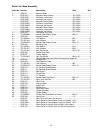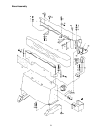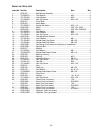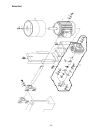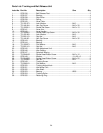
17
Trouble Probable Cause Remedy
Machine will not
start/restart or
repeatedly trips
circuit breakers or
blows fuses.
Miswiring of the unit.
Check to make certain all electrical connections
are correct and properly tight. The electrical
connections other than the motor are
preassembled and tested at the factory. Therefore,
the motor connections should be checked as the
highest probability for error. If problems persist,
double check the factory wiring.
On/off switch failure.
If the on/off switch is suspect, you have two
options: Have a qualified electrician test the switch
for function, or purchase a new on/off switch and
establish if that was the problem on changeout.
Sanding belt won’t
come up to speed.
Extension cord too light or
too long.
Use adequate size extension cord.
Low (incoming) voltage. Contact qualified electrician.
Excessive bite, or feed
pressure too great.
Allow sanding belt to cut freely, do not force.
Belt won’t track. Drum is worn. Replace drum.
Belt is stretched unevenly. Replace belt.
Belt slips or stalls
on application of
pressure.
Sanding belt tension not
adequate.
Make sure lever is down all the way (page 13).
Excessive sanding
belt replacement.
Too much pressure being
used during cuts.
Reduce pressure.
Not using full width of belt. Stroke across the belt using full width.
Machine vibrates
excessively.
Improper motor mounting. Check and adjust mounting.
Spring on tension
mechanism is fatigued or
broken.
Replace with new spring.
Drum is loose. Tighten cap screw in motor (page 23, #39).
Bad or broken sanding belt. Replace sanding belt.
Sanding marks on
workpiece.
Sanding belt too coarse for
required finish.
Use proper grit. Coarser grits for stock removal,
and finer grits for finish work.
Workpiece sanded across
grain.
When surface sanding, use very fine sanding belt
then finish by hand, working in direction of grain.
Sanding grains
quickly rub off belt.
Sanding belt has lost its
original properties.
Do not store sanding belts in extremely dry or high-
temperature areas. Do not fold sanding belts.
Sanding belt
becomes glazed.
Sanding painted surface. Use open-end grain/flint belt.
Wood is wet or gummy. No cure. Use different stock.



